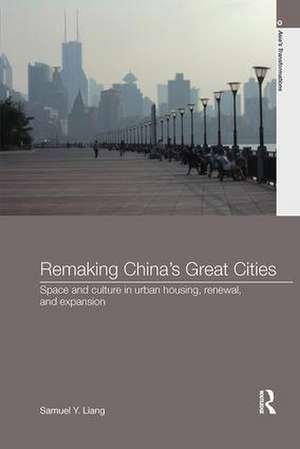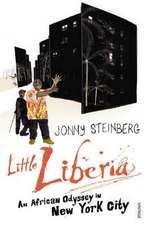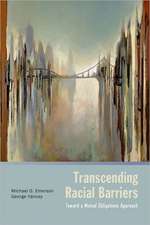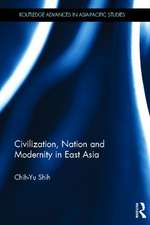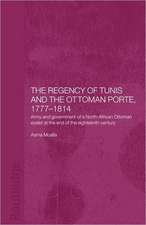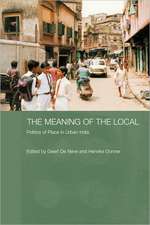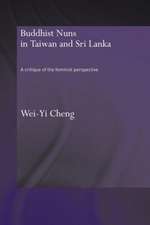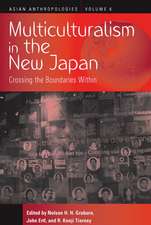Remaking China's Great Cities: Space and Culture in Urban Housing, Renewal, and Expansion: Asia's Transformations
Autor Samuel Y. Liangen Limba Engleză Paperback – 24 mai 2017
This book examines the cities’ continuous urban legacies since 1949 in relation to state governance, economic reforms, and cultural production. By adopting local historical perspectives, it offers more nuanced accounts of the current urban change than the modernization/globalization paradigm and conceptualizes the change in the context of the cities’ socialist, colonial, and imperial legacies. Specifically, Samuel Y. Liang offers an overview of the urban planning and territorial expansion of the great cities since 1949; explores the production and consumption of urban housing, its spatial forms, media representations, and socio-political implications; and examines the state-led redevelopment of old urban cores and residential neighborhoods, and the urban conservation movement.
Remaking China’s Great Cities will be of great interest to students and scholars working across a range of fields including Chinese studies, Chinese culture and society, urban studies and architecture.
| Toate formatele și edițiile | Preț | Express |
|---|---|---|
| Paperback (1) | 449.41 lei 6-8 săpt. | |
| Taylor & Francis – 24 mai 2017 | 449.41 lei 6-8 săpt. | |
| Hardback (1) | 1057.13 lei 6-8 săpt. | |
| Taylor & Francis – 4 aug 2014 | 1057.13 lei 6-8 săpt. |
Din seria Asia's Transformations
-
 Preț: 282.38 lei
Preț: 282.38 lei -
 Preț: 267.92 lei
Preț: 267.92 lei -
 Preț: 341.33 lei
Preț: 341.33 lei - 18%
 Preț: 1220.46 lei
Preț: 1220.46 lei -
 Preț: 447.51 lei
Preț: 447.51 lei - 18%
 Preț: 1060.87 lei
Preț: 1060.87 lei -
 Preț: 489.44 lei
Preț: 489.44 lei -
 Preț: 446.58 lei
Preț: 446.58 lei - 18%
 Preț: 1003.43 lei
Preț: 1003.43 lei -
 Preț: 488.29 lei
Preț: 488.29 lei - 28%
 Preț: 822.54 lei
Preț: 822.54 lei - 18%
 Preț: 1225.22 lei
Preț: 1225.22 lei -
 Preț: 416.44 lei
Preț: 416.44 lei - 18%
 Preț: 1389.36 lei
Preț: 1389.36 lei - 18%
 Preț: 1062.98 lei
Preț: 1062.98 lei -
 Preț: 483.49 lei
Preț: 483.49 lei -
 Preț: 452.31 lei
Preț: 452.31 lei -
 Preț: 416.22 lei
Preț: 416.22 lei -
 Preț: 438.14 lei
Preț: 438.14 lei -
 Preț: 411.42 lei
Preț: 411.42 lei -
 Preț: 443.65 lei
Preț: 443.65 lei - 18%
 Preț: 1055.51 lei
Preț: 1055.51 lei - 18%
 Preț: 1054.27 lei
Preț: 1054.27 lei -
 Preț: 445.38 lei
Preț: 445.38 lei - 25%
 Preț: 573.10 lei
Preț: 573.10 lei - 28%
 Preț: 821.46 lei
Preț: 821.46 lei - 18%
 Preț: 1337.43 lei
Preț: 1337.43 lei - 18%
 Preț: 1055.51 lei
Preț: 1055.51 lei - 18%
 Preț: 1059.45 lei
Preț: 1059.45 lei - 15%
 Preț: 547.89 lei
Preț: 547.89 lei -
 Preț: 450.15 lei
Preț: 450.15 lei -
 Preț: 489.26 lei
Preț: 489.26 lei - 18%
 Preț: 1110.77 lei
Preț: 1110.77 lei -
 Preț: 411.42 lei
Preț: 411.42 lei -
 Preț: 453.96 lei
Preț: 453.96 lei - 24%
 Preț: 337.22 lei
Preț: 337.22 lei - 26%
 Preț: 186.91 lei
Preț: 186.91 lei
Preț: 449.41 lei
Nou
Puncte Express: 674
Preț estimativ în valută:
85.99€ • 89.79$ • 71.01£
85.99€ • 89.79$ • 71.01£
Carte tipărită la comandă
Livrare economică 15-29 aprilie
Preluare comenzi: 021 569.72.76
Specificații
ISBN-13: 9781138091917
ISBN-10: 113809191X
Pagini: 256
Ilustrații: 103 Halftones, black and white; 103 Illustrations, black and white
Dimensiuni: 156 x 234 x 14 mm
Greutate: 0.45 kg
Ediția:1
Editura: Taylor & Francis
Colecția Routledge
Seria Asia's Transformations
Locul publicării:Oxford, United Kingdom
ISBN-10: 113809191X
Pagini: 256
Ilustrații: 103 Halftones, black and white; 103 Illustrations, black and white
Dimensiuni: 156 x 234 x 14 mm
Greutate: 0.45 kg
Ediția:1
Editura: Taylor & Francis
Colecția Routledge
Seria Asia's Transformations
Locul publicării:Oxford, United Kingdom
Public țintă
Postgraduate and UndergraduateCuprins
Introduction Part I: Planning and Expansion 1. Urban planning and cellular urbanism 2. Utopian urban forms and linear urbanism Part II: Housing and Culture 3. Reinventing home as private retreat 4. The developer’s real estate culture 5. Homeowner subjectivity and social stratification Part III: Renewal and Conservation 6. Rebuilding political centers 7. Rebuilding urban slums 8. Spoliation and conservation 9. Epilogue: Resistance to capitalist urbanization
Notă biografică
Samuel Y. Liang is Associate Professor of Humanities and the Coordinator of Chinese Studies at Utah Valley University, USA.
Recenzii
"Remaking China’s Great Cities is on the whole a strong contribution to our knowledge about urban transformation in the PRC. It has opened new windows onto this huge topic and deserves attention from urban scholars across disciplines." - Max D. Woodworth, The China Quarterly 2015
"Samuel Liang’s latest book, Remaking China’s Great Cities: Space and Culture in Urban Housing, Renewal, and Expansion gives a comprehensive overview of rapid urbanization in China since 1949...This book explores multiple dimensions of urbanization in China substantiated by well-illustrated case studies. It is highly readable and makes a valuable contribution to our knowledge about Chinese urban development trajectories from historical perspectives." - Hing-wah Chau, The University of Melbourne, China Information 29 (3)
"Samuel Liang’s latest book, Remaking China’s Great Cities: Space and Culture in Urban Housing, Renewal, and Expansion gives a comprehensive overview of rapid urbanization in China since 1949...This book explores multiple dimensions of urbanization in China substantiated by well-illustrated case studies. It is highly readable and makes a valuable contribution to our knowledge about Chinese urban development trajectories from historical perspectives." - Hing-wah Chau, The University of Melbourne, China Information 29 (3)
Descriere
This book focuses on the urban transformations of three mega cities: Beijing, Shanghai and Guangzhou. It examines the cities’ continuous urban legacies since 1949 in relation to state governance, economic reforms, and cultural production. By adopting local historical perspectives, it offers more nuanced accounts of the current urban change than the modernization/globalization paradigm and conceptualizes the change in the context of the cities’ socialist, colonial, and imperial legacies.
